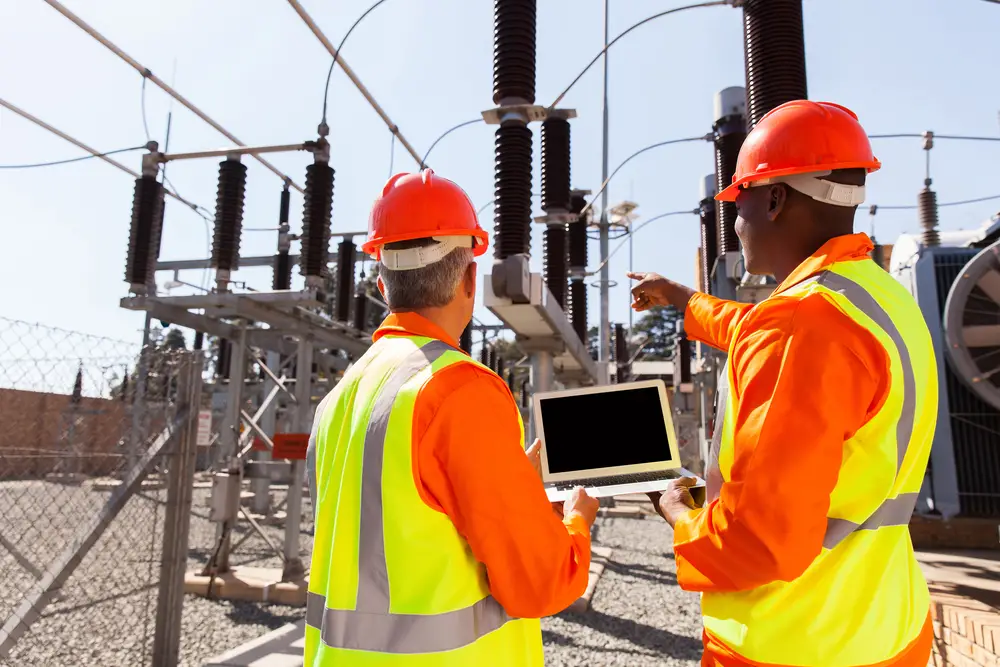The utility industry is essential to modern society, providing vital infrastructure and services that keep our homes powered, connected, and secure. However, the sector presents an array of potential risks that can significantly impact the financial performance of the utility industry if not managed properly. Examples include transmission line maintenance costs.
Utility markets are undergoing a transformation, offering customers new ways to utilize water, natural gas, and electricity. The electricity sector was particularly affected by a similar shift in consumption. With the rise in new energy sources and smart appliances, consumers are now more receptive to energy. As your market changes, you must track how to stand in front of the competition.
Keeping track of key risk indicators is essential for utility companies to remain functional and profitable. Here’s a look at the most important risk indicators on which utility companies should keep an eye.
Regulatory Risk
The regulatory landscape can change quickly and without warning, which can cause compliance issues for utility companies. Staying abreast of changes in regulations is essential. This includes everything from changes to state laws concerning energy production and pricing to federal water regulations.
Utility company executives should constantly monitor regulatory risk to ensure that their business complies with current laws and regulations.
Environmental Risk Indicators
The utility industry has one of the highest environmental impacts of any sector due to its dependence on natural resources such as water, gas, and electricity. To mitigate their environmental risks, companies must be aware of key indicators like changing weather patterns and rising sea levels.
For example, rising sea levels can directly affect coastal power plants by causing flooding or saltwater intrusion into freshwater supplies used for cooling systems. This could lead to forced shutdowns and costly repairs or replacements.
Financial Risk Indicators
The cost of running a successful utility business can be high. From purchasing new equipment to maintaining existing infrastructure, it’s essential for companies in the sector to keep a close eye on their financial health to ensure they can continue operations without interruption.
Key financial risk indicators include changes in commodity prices (e.g., fuel cost, coal, or gas generation), customer demand fluctuations, and changes in government regulations that could affect pricing or operational costs. Knowing how these factors will impact revenues can help businesses avoid potential financial difficulties before they become serious problems.
Operational Risk Indicators
As with any business, operational risks are always present when running a utility company. These risks come from internal sources (e.g., personnel issues) and external sources (e.g., cyber threats). Maintenance costs operation can be tracking metrics for operational risk indicators for electric utilities.
Internal risk indicators may include employee turnover rates or changes in leadership while external risk indicators may include increased frequency of cyberattacks or other malicious activities aimed at disrupting operations or stealing confidential data.
Companies need to be aware of these threat vectors so that they can take steps to mitigate them before significant damage is done. Others include fuel costs spike and administrative and general expenses.

What Are KRIs?
KRIs are measurements used to monitor potential risks and assess their severity. They provide an early warning system for businesses to quickly identify threats and take action before the situation becomes serious.
KRIs measure different types of risks, including financial, operational, legal, compliance, credit, reputational, market, and strategic. These measurements tell companies when it is time to adjust their strategies or take proactive steps to mitigate any potential losses.
The Benefits of Using KRIs
Using KRIs can bring many benefits to your company. Having a clear picture of potential risks allows you to develop proactive strategies for dealing with them before they become too serious or costly.
You can also use KRIs to anticipate events that may have otherwise been difficult to predict or detect until it is too late. Furthermore, having access to real-time data about different types of risks helps you make more informed decisions about how best to manage those risks moving forward.
How Utility Companies Can Use KRIs
Utility companies need to be particularly aware of their operational and financial risks since these are both key components of running a successful business. Operational risk managers should focus on monitoring factors such as customer service quality, employee safety protocols, maintenance schedules, energy usage levels, equipment performance metrics, and compliance regulations
On the other hand, financial risk managers need to track KPIs like capital expenditure levels, budgeting practices, cash flow issues, cost savings initiatives, and debt levels in order to keep the costs associated with operations manageable while still achieving desired outcomes from projects or investments undertaken by the company.
Utility companies should use KRIs to identify potential threats that could affect their operations, such as power outages, cyber-security risks, natural disasters, regulatory changes, and customer satisfaction levels. Insightful key performance indicators can be derived by hiring specialized data engineers.
Utility companies should leverage automation and AI technologies when implementing a KRI system. Automation can help simplify data collection processes, allowing for more accurate data gathering and analysis. Additionally, AI algorithms can be used to accurately interpret data points and draw meaningful insights from them in real time.
Key performance indicators for electric utility companies
Key performer indicators (KPI) are activities and profit measures used in various industries such as utilities. KPIs can be used to determine performance baselines to develop strategies to improve performance in those baseline measures. KPIs can be used to calculate key performance indicators, in tracking key performance indicators, and operational and investment behavior.
The measure is derived from external performance evaluation or comparison with an external performance by peers through the analysis of external reports or publications. The KPI measures the effectiveness or failure of utility initiatives in various ways.
KPIs measure the productivity of a company. Electric utilities can use those statistics to determine the performance standards for their products. When companies establish this standard, companies can plan and implement a strategy that improves results.
KPIs are metrics that measure external and internal performance. Watch the progress of electric utilities toward specific goals. Monitor progress toward financial and performance objectives.

What are key performance indicators KPIs in the energy and utility industry?
Key Performance Indicators (KPIs) in the energy and utility industry often focus on the sector’s effectiveness, cost-efficiency, customer satisfaction, and sustainability performance. Energy consumption, renewable energy generation levels achieved, emissions reduction targets met or exceeded, customer churn rates, customer satisfaction ratings, and productive use of natural resources are all KPIs relevant to this industry.
A KPI or key performance indicator is an important measure used when assessing the critical elements of a successful organization’s success.
What is a KPI utility?
A KPI utility is a tool that helps organizations measure and monitors key performance indicators (KPIs). A KPI utility can provide visibility into the organization’s performance relative to its goals and help identify potential improvement opportunities.
KPI utilities allow organizations to quickly track important metrics such as customer satisfaction, operational efficiency, and cost-effectiveness.
Key performance indicators (KPIs) measure a company’s performance and profits. Electricity companies should use these data in their performance evaluations. Once this standard is established, businesses develop strategies for improving their performance.
Which of the following is a KPI for gas utility?
A KPI for gas utility could include the total volume of gas delivered, the average cost per unit, the customer service index (CSI) rating, and outage metrics. Additionally, this sector’s KPIs related to safety and environmental compliance are also important.

Conclusion
Awareness of key risk indicators is critical for any company in the utility space as it can help them prepare for unexpected disruptions and ensure continuity of operations despite unpredictable events outside their control.
Understanding the environmental, financial, and operational risks their industry poses, utilities can better equip themselves against potential losses, ensure long-term success for their business ventures, and ultimately provide better customer service worldwide!

Chris Ekai is a Risk Management expert with over 10 years of experience in the field. He has a Master’s(MSc) degree in Risk Management from University of Portsmouth and is a CPA and Finance professional. He currently works as a Content Manager at Risk Publishing, writing about Enterprise Risk Management, Business Continuity Management and Project Management.

